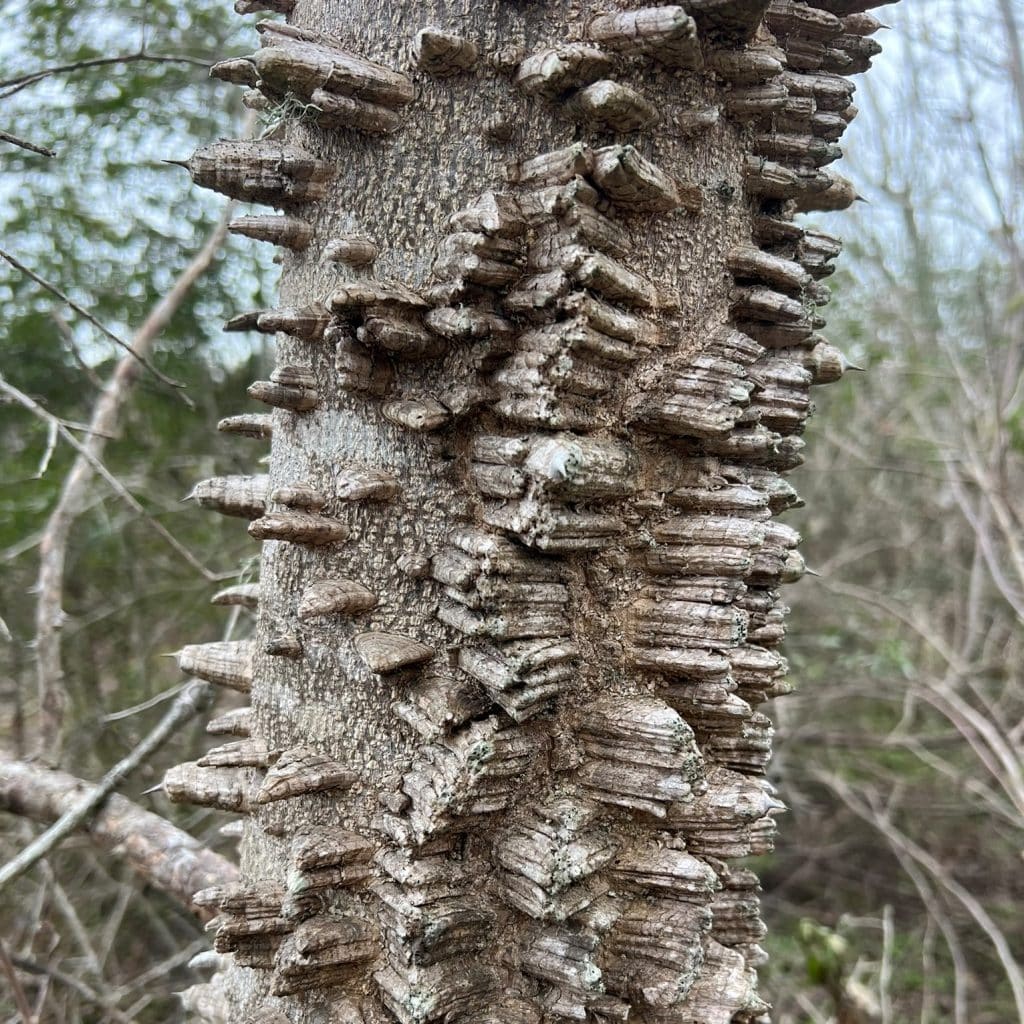Of the many species of plants that I encounter, the spikey ones are often the most interesting. It is true that I do visit some odd habitats and locations, but Southern Prickly Ash always gets my attention when I spot it in the places I frequent. But the thorns and spines are just some of the traits of this curious tree.
Simply brushing up against a branch or leaning on the trunk of this tree will ensure you pay attention, as sharp spines adorn the compound leaves and thorns cover the stems and trunk, situated at the tip of prominent woody tubercles. These characteristics give the tree interesting texture, from a safe distance.

Everything about this tree screams “leave me be”. These structures help deter animals from climbing into the tree or feasting on the leaves. But this plant also has chemical defenses to ward off at least some insects. These chemicals have served humans in medicinal ways, but as I recently learned, also in cuisine.
Also known as Toothache Tree, this species belongs to the same family of plants as citrus and the smell and taste of its leaves do resemble orange. But for me, my original lesson on its use in medicine was all about the bark. Peeling off and chewing a portion of the bark will numb your gums and tongue every bit as well as your dentist does when he or she dabs that medicine on your gums, ahead of sticking you with what to me always seems to be an overly large needle.
Prickly ash bark contains alkaloids and volatile oils that produce this numbing effect, but beside easing our pain, what are their purposes? From the limited research I could find, this chemical soup is effective in repelling insects – a trait of other common plants that have the same challenge of making it difficult for insects to eat them.
Besides treating pain, extracts from Chinese Prickly Ash are also used to treat nausea and vomiting, diarrhea, and many other conditions. It is also the Chinese and Japanese that use parts of these plants in their cuisine. Known as Sichuan Pepper in China, whole fruit or the dried husks of the seeds are ground and added to foods to “transform other flavors”.
It was my friend and award-winning Chef Alex Perry and his wife Kumi Omori of Vestige Restaurant (Ocean Springs, MS) that sent me to locate the American relative of Chinese Prickly Ash to add to their spice rack. The Japanese use their species of Prickly Ash, called Sansho (the pepper) and Kinome (the young shoots) to enhance their dishes. Once I found a stand of Southern Prickly Ash and harvested fresh leaves, I of course had to try it. My gums and tongue continued to tingle through the 30-minute drive to the restaurant.
Of course, Prickly Ash is not there solely to satisfy our needs but serves to feed other critters of our world. It is the host plant for several insects, including the Giant Swallowtail Butterfly. And this summer, I will be on the lookout for the Grizzled Mantis, reported from these trees by my friend and fellow naturalist, Robert Smith. I guess I will pick up some leaves for Alex and Kumi while I am there – I have so many good friends with needs.
Hope to see you in our great outdoors!